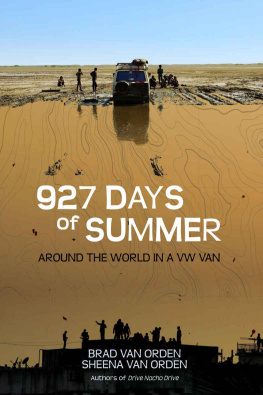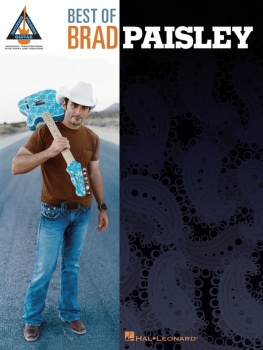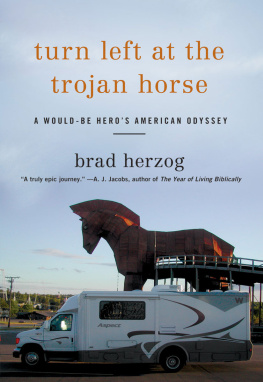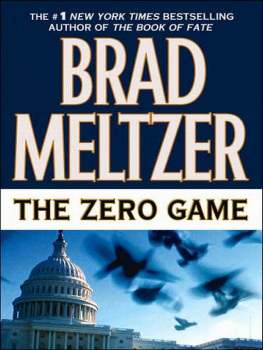Without limiting the rights under copyright reserved above, no part of this publication may be reproduced, stored in or introduced into a retrieval system, or transmitted, in any form or by any means (electronic, mechanical, photocopying, recording or otherwise), without the prior written permission of both the copyright owner and the above publisher of this book.
Part 1
In a Past Life

At 4:30 I dizzily stumbled out of bed. My skis waited in the car, and as I passed the table by the front door I grabbed the breakfast Id set out the night before. By 4:45 I was coaxing my eyes open as I barreled through the snow, NPR on the radio, banana in hand, waking up to news of skiers lost in avalanches in California. Unseasonably high snowfall this year. At 6:00 I climbed steadily upward in the dark, the cold mountain air burning my lungs with each breath, the ski slopes illuminated only by the snows reflection of the stars in the night sky. Through my headphones I was immersed in a podcast about traveling the world. This was part of the ritual.
After an hour of hiking in the dark, imagining travel to faraway places, I reached the top of the mountain. 7:00 just in time for the rising sun to cast a shadow of the San Francisco peaks all the way across the high desert to the Grand Canyon, barely visible below the horizon. As I put away my climbing skins, pulled on my jacket, and kicked my telemark boots back into my bindings, I couldnt shake the silly grin from my face. With a nudge of my ski pole I sent myself sailing down the mountain Id just climbed, crouching into each turn and springing up again, laying down the days first tracks. At the headwall, half way down the mountain, I picked up enough speed to scare myself. Yep, still alive! I still couldnt get that silly grin off of my face.
By 8:00 I was back in the car heading down the mountain, just in time for an 8:30 meeting at work. Theres just something about being in the mountains.
* * *
On our first morning in the Colombian Andes I awoke to an unfamiliar crispness in the air. Having spent the last five months in Central America we were getting used to stifling heat and humidity. We crawled out of our down sleeping bags and put the coffee on. It was going to be a long day.
James and Lauren emerged from their truck bundled up like New York City hobos. Overnight their front tire had gone flat, causing their truck to tilt steeply to one side, so James had spent the night crushing Lauren against the fender well. Another night in the life of a homeless person, I guess. Sheena and I had slept like babies in Nacho's pop top roof tent, but the cold was a firm reminder that we had reached the Andes.
We donned our packs, bid ado to our new friend Jeni the tiny red-cheeked girl who lived in the rock hut next to our camp and set off toward the towering, snow-capped peaks to the Southeast. The double track dirt road ended shortly beyond our camp, and gave way to a small singletrack leading up the valley toward Pan de Azuca r and El Pulpito del Diabl o , looming above.
The trail rose higher and higher over mountains of shale, and before long we found ourselves scrambling over boulders up a steep rock fall towards the first pass: Paso de Cusir . If all went well we would complete two 15,000 passes before descending to the Laguna de la Plaz a , a high glacial lake at 13,780 feet, where we would camp. We were told the hike would take about seven hours, but by the fourth hour dark clouds had moved in and cloaked the pass like a woolen shawl. The trail wound upwards in a series of steep switchbacks straight into the cloud.
In the early afternoon we reached the top of Paso de Cusir , and in doing so found ourselves in the middle of a snowstorm. A mixture of snow and rain pelted us like horizontal pellets from an invisible army of pellet gun toting boy scouts. We hid behind the wooden plank summit sign, which announced that wed arrived at the inhospitable elevation of 14,469. We assessed the situation, running out from behind the sign to look beyond the pass to see what lay in store for us. The trail disappeared into a carpet of dark clouds and whipping wind and snow.
Onward and downward? I asked, hoping for dissenters.
UhIts decision time, guys, James said. Seeing the out, we had a short discussion and decided to throw in the towel and head back down in the direction wed just come. We werent prepared for blizzard conditions, and some of the team were already experiencing numb fingers and toes. Nothing says killjoy like frostbite. Or pulmonary edema.
When we reached the rock fall on the way down, the entire section had been turned into a freezing cold waterfall. I had a split second daydream of me waking up dead, wrapped in my soggy sleeping bag at the bottom of a raging, icy cascade, and silently lauded our decision to turn back.
The following day, after having returned safely, albeit very cold and very tired, we picked up camp and moved to Hacienda La Esperanza . Marco, a stereotypical woolen poncho wearing Colombian cowboy, cooked us dinner in his kitchen and showed off his antiques and old photos. Outside the weather was drizzling and gray.
In the morning we awoke, threw our things together and departed camp through fields reminiscent of Switzerland, interspersed with rocky spires jutting up through the grass while long haired dairy cows moseyed about.
We hiked through a glacial valley laced with streams before climbing upwards over a series of rocky plateaus. On our right, an enormous rock wall separated us from the sprawling mountains and the tiny towns wed driven through to get here; Onzaga, Covarachia, Soat, and El Cocuy. To our left, glacier-capped peaks shimmered above the rocky terrain, taunting me with their 17,000 foot untracked powder bowls.
After five hours of uphill slogging we reached our destination for the night: La Cueva del Hombr e . I had asked Marco why it was called The Man Cave before we set off from La Esperanza.
Long ago, ducks would stop at the lake for a rest from their migration, and the men would shoot them. The men would sleep in the cave after they shot the ducks, so it is called La Cueva del Hombr e . The ducks dont come any more. I noted that Marco should make up a more titillating story about how the Man Cave got its name.
We all set up our tents within the cave, and then Sheena and I then set off for a hike up to the lake to have a look around while James and Lauren took a nap. We bundled up and bounced out from under the overhang feeling light without our packs.
The trip from the cave to the lake took a damn, dirty long time, but once we crested the ridge and the landscape spread out in front of us, we lost our breath. Pulmonary edema? Nope! The mountain to the left was capped by a massive bowl of untouched snow from top to bottom, where the glacier spilled over the edge of a vast chasm; a crashing calamity of building-sized ice chunks paused in suspended animation. On the opposite side of the basin, another glacier spilled down from the top of a 17,000 foot peak, terminating at the edge of a colossal sheer rock wall. The ice composing the second glacier bore a map of its ancient history in dirty veins crisscrossing its surface, and diving into its depths. Between the walls of the basin were a series of small lakes fed by the runoff from both glaciers. All we could do was stare in awe, a mixture of blood and adrenaline coursing through our veins.

















